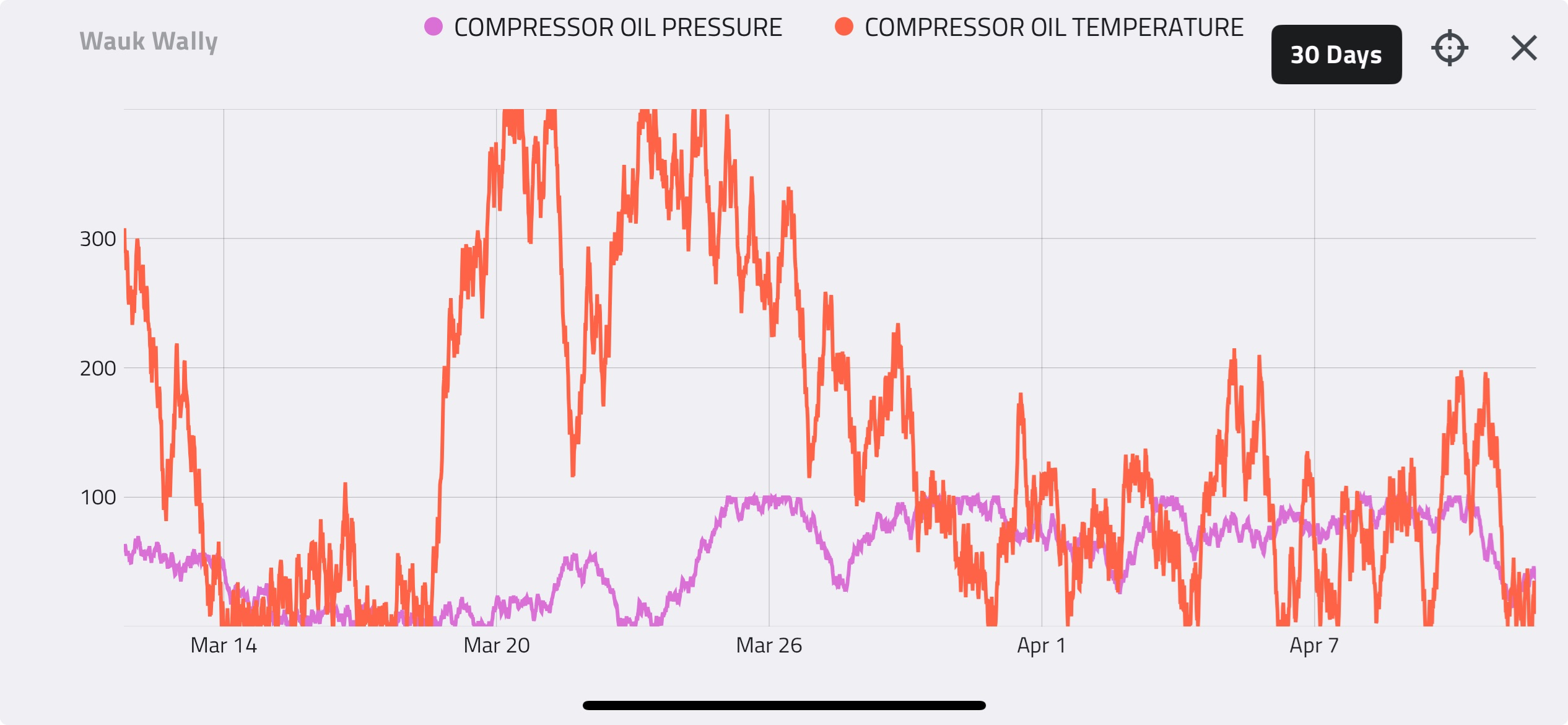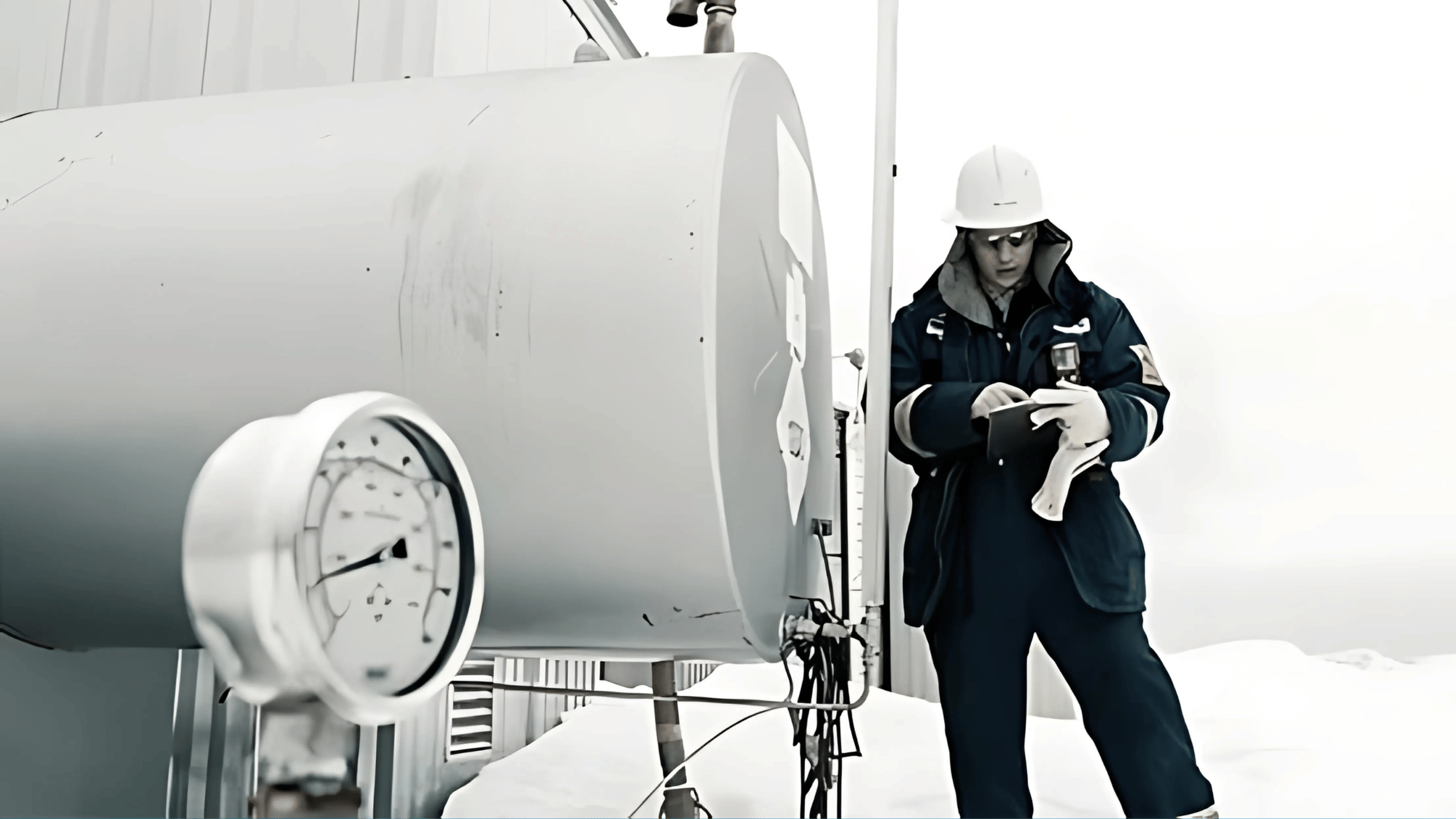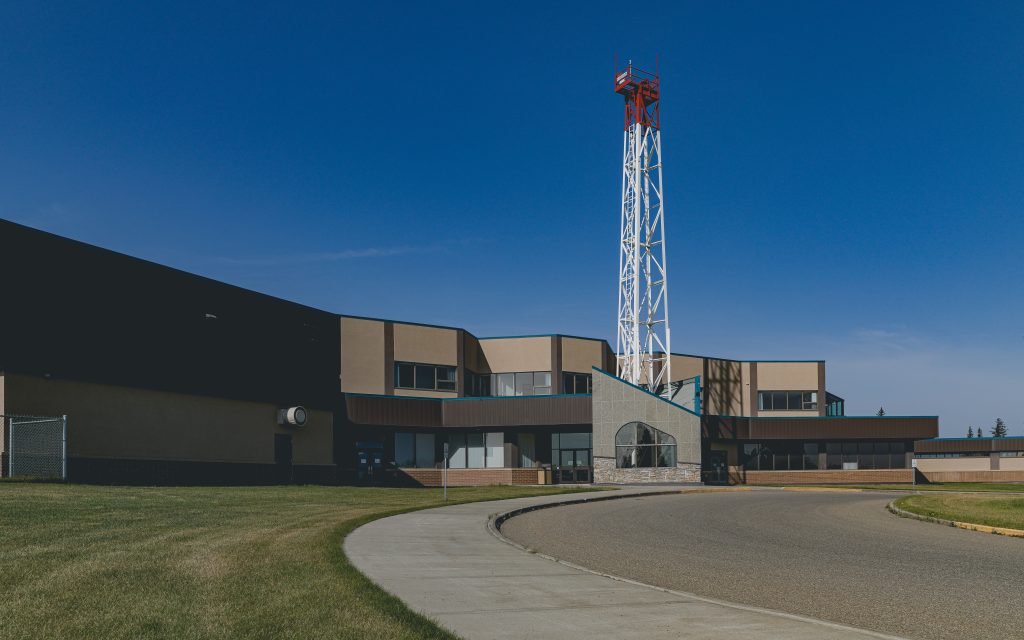Houston, TX |
This post will look at how unaccounted pressure drops effect the Blowby calculated in an Enalysis report from Detechtion Technologies.
Enalysis requires a suction and discharge pressure and temperature for each cylinder in order to calculate the thermodynamic performance of that cylinder. While suction temperature, suction pressure and discharge pressure can be common for all cylinders on a compression stage, the discharge temperature must be unique to each cylinder. The location of each these values is important when it comes to understanding and troubleshooting Blowby on an Enalysis report.
Blowby from Pressure Drops
Ideally, suction pressure and temperature should come from the suction pulsation bottle. Discharge pressure should come from the discharge pulsation bottle, however, discharge temperature should come from the cylinder discharge flange or from the piping connecting the cylinder discharge flange to the discharge pulsation bottle. This is shown in the two images below.
In the first image, matte black spots have been painted on the suction and discharge piping, as digital temperature sensors where not available on this package. The dots provide for a consistent location for the temperatures to be taken and the matte black paint is used to provide an accurate read with an infrared temperature gun.
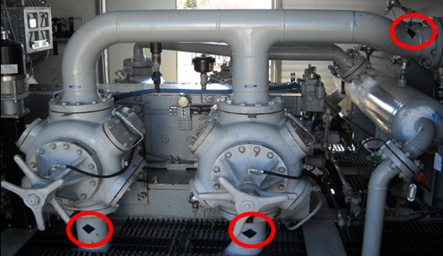
This second image shows the ideal placement of suction and discharge pressure gauges in the pulsation bottles.
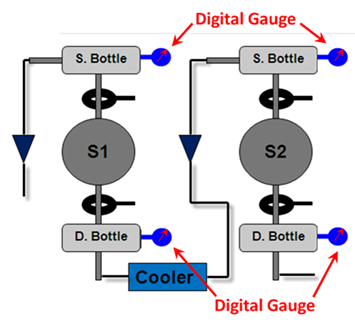
If an inter-stage (Stage 2, 3, 4) suction pressure is unavailable, it is permissible to use the previous stage’s discharge pressure as a suction pressure, essentially assuming no pressure drop between the stages. This assumption is reasonable if the pressure drop between stages is small and constant. But what if the pressure drop is not small or, worse, is increasing over time?
Clogged Suction Screen Filter (Witches Hat)
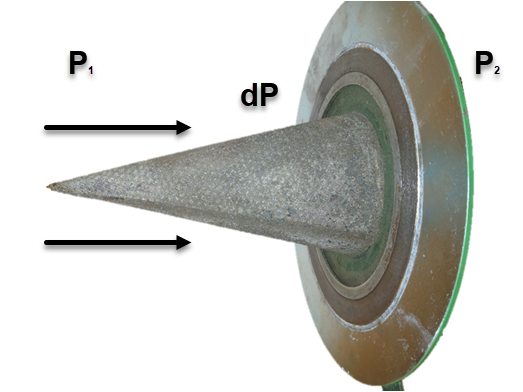
When a suction screen filter gets blocked, the reduced flowing area results in a pressure differential across the filter, with the pressure downstream lower than the pressure upstream.
The image below shows the effect of a blocked suction screen filter on the compression ratio across a stage of the compressor if the suction pressure sensor is upstream of the filter, such as in the scrubber. If the measured suction pressure is taken upstream of the filter, the compression ratio is 2.0, noting that absolute pressures have been used.
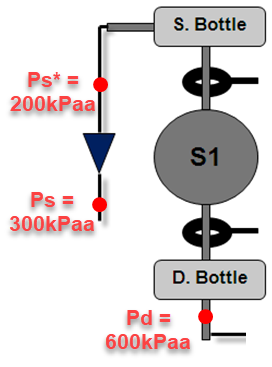

However, if we consider the 100 kPa pressure drop across the filter, the actual compression ratio is 3.0. A higher compression ratio will result in a higher discharge temperature. This means that measured discharge temperature will be much higher than the expected discharge temperature calculated by Enalysis based on the 2.0 compression ratio. This will result in high Blowby being calculated and flagging on the Enalysis report.

Plugged / Frozen Cooler
A similar situation can occur on a multi-stage compressor when an inter-stage suction pressure is not available. In this case, the previous stage’s discharge pressure can be used as the suction pressure of the downstream stage. However, if the pressure drop between stages, for example from a plugged or frozen (hydrates) cooler, is large or increases over time, this will cause Blowby to flag on the Enalysis report.
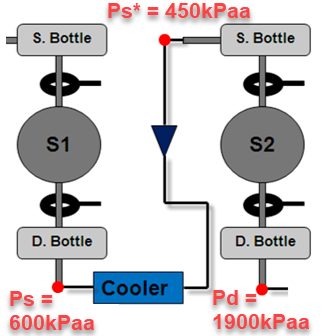 As shown in the image above, the true compression ratio across stage 2 is 4.2 (1900kPaa/450kPaa). However, if the stage 1 discharge pressure is input as the Stage 2 suction pressure, Enalysis will calculate a compression ratio of only 3.2 and will calculate an expected discharge temperature accordingly for this compression ratio. As a result of the actual compression ratio being greater than the calculated compression ratio, the measured stage 2 discharge temperature will be higher than the expected discharge temperature. This will cause Blowby to flag on the Enalysis report.
As shown in the image above, the true compression ratio across stage 2 is 4.2 (1900kPaa/450kPaa). However, if the stage 1 discharge pressure is input as the Stage 2 suction pressure, Enalysis will calculate a compression ratio of only 3.2 and will calculate an expected discharge temperature accordingly for this compression ratio. As a result of the actual compression ratio being greater than the calculated compression ratio, the measured stage 2 discharge temperature will be higher than the expected discharge temperature. This will cause Blowby to flag on the Enalysis report.
So What Does This Mean for Oil and Gas Production Equipment?
Having a better understanding of what Blowby is allows for efficient troubleshooting when Blowby flags on an Enalysis report. The fact that an unaccounted pressure drop can contribute to Blowby being calculated does not detract from the effectiveness of the Blowby calculation. It simply changes the focus of the investigation into the causes of the Blowby.
Blowby indicates an inefficiency in the
compression process of a specific cylinder
based on the input variables.
The location of the inefficiency is between
the location of the measured suction pressure and
the location of the measured discharge pressure.
Specific steps to troubleshoot Blowby will be discussed in a future E-Tip.
Other Probable Causes
There are many factors that can contribute to either Blowby or gauge maintenance on an Enalysis report. Other than component damage and unaccounted pressure drops, some of the other causes are:
- Faulty temperature sensors/ IR guns
- Faulty pressure sensors
- High lube rates
- Improper valve springing
These causes will be discussed in more detail in future E-Tips.
Click here to read Enalysis Tip 1.6 - Causes of Blowby: Valve Springing and Lube Rates in Gas Compression Equipment now!

